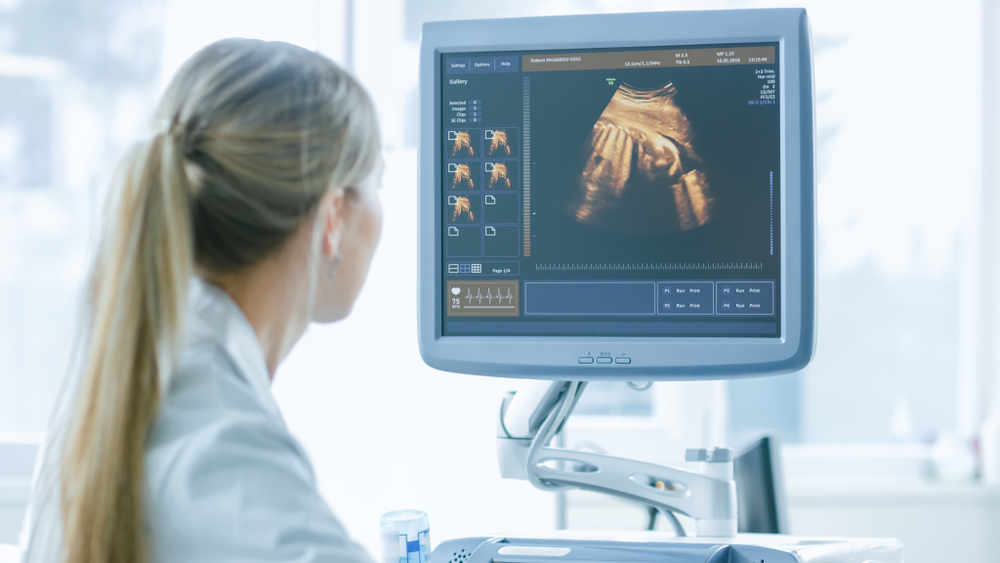3D Ultrasound and the Doctor-Patient Relationship
 Point-of-care ultrasound (PoCUS) is among the most pivotal and universally appreciated technologies in emergency medical care. When precision matters, and every second counts, PoCUS provides the life-saving diagnostic data clinicians need. The utility of PoCUS continues to contribute to the technology’s rapid evolution. Today’s PoCUS devices are more affordable, integrated, and portable enough to go virtually anywhere.
Point-of-care ultrasound (PoCUS) is among the most pivotal and universally appreciated technologies in emergency medical care. When precision matters, and every second counts, PoCUS provides the life-saving diagnostic data clinicians need. The utility of PoCUS continues to contribute to the technology’s rapid evolution. Today’s PoCUS devices are more affordable, integrated, and portable enough to go virtually anywhere.
As portable ultrasound technology enjoys a golden age of innovation, these devices are an increasingly ubiquitous tool for first-line diagnosis and treatment. From emergency rooms to field use by first responders, PoCUS is empowering an informed approach to treatment when it matters most. When time is of the essence, PoCUS brings critical clarity to medical decision-making.
A growing reliance on emergency ultrasound
Modern healthcare is driven by digital data and the patient experience, and clinicians are working to unite these two facets of care for an improved doctor-patient relationship. Healthcare is not simply about striving for the best outcome. Today, it’s also about delivering a positive and informed patient experience, and — from initial diagnosis to follow-up care — 3D ultrasound has a primary role to play.
Patient-focused care
“Patient-focused healthcare” might sound redundant, but there is a difference between a patient’s health outcome and the quality of their patient experience. Beyond diagnosis and treatment, a patient-focused approach empowers patients to actively participate in their own care. Whatever their prognosis, patient-focused care prioritizes the patient’s understanding of their condition and treatment options and ensures they feel comfortable, confident, and cared for throughout their patient experience.
Doctor-patient relationships are the foundation of patient-focused care. Physicians are a patient’s access point for insight, information, and answers, and there is a growing body of evidence-based research supporting the idea of healthy doctor-patient relationships as a contributing factor in quality of care and patient outcomes.
And clear communication determines both the strength of this critical relationship and the quality of the patient experience. Physicians who can relay information with tact, poise, and empathy are essential to a positive experience, as are the diagnostic and treatment tools they use to discover and deliver information.
3D ultrasound
Communication between doctor and patient typically occurs in the context of the patient’s condition, including symptoms, diagnosis, prognosis, treatment, side effects, and recovery status. Diagnostic information is gathered from lab tests and imaging results, and with imaging, it’s often useful to offer patients a visual reference.
3D ultrasound is an excellent visual aid, and it creates more opportunities for patients and doctors to interact, communicate new information, answer questions, and set expectations. 3D ultrasound fortifies healthcare relationships by allowing doctors to provide patients with more and better information, including:
- Quicker diagnoses. With point-of-care ultrasound (PoCUS) and 3D imaging, patients receive real-time visuals of their condition backed by a physician’s interpretation and diagnosis.
- Diagnostic integrity. 3D ultrasound technology enhances the quality of diagnostic data and gives clinicians more context for clarifying and explaining the details of a patient’s condition.
- Refined treatments. Detailed imaging helps physicians deliver data-driven treatment for a more refined approach aimed at achieving specific results.
- Improved understanding. When patients can see what they’re dealing with, they form a more confident connection between their diagnosis and the prescribed treatment approach.
- Cost-effective diagnostic imaging. The cost of every test and treatment can cast a shadow over the entire patient experience. Ultrasound technology and imaging costs continue to trend downward, which helps to ease patient financial anxiety.
These factors combine with others — such as ultrasound’s non-invasive approach to diagnostic imaging — to improve the overall patient experience. Physicians earn trust and deliver compassionate care, while patients feel empowered and informed. In fact, according to one cross-sectional study, “More than nine out of ten patients reported that POCUS increased the perception of level of service and quality of care in general practice.”
Creating a positive patient experience
Picture this: A patient visits the emergency room suffering from intense abdominal pain. In addition to pain, the patient is experiencing anxiety and uncertainty. After a general examination and health history review, the attending physician wheels a 3D ultrasound machine to the patient’s bedside. When the scan is complete, the doctor shows the patient a clear model of the diagnostic area and explains, “It looks like you have gallstones. They are highly treatable, and we’ll get started on your treatment right away.”
The condition has a name. The physician offers reassurance and prescribes a treatment plan. With the doctor’s clear explanation and a visual reference, the patient is instantly more informed and less anxious.
This is the beginning of a positive patient experience.

